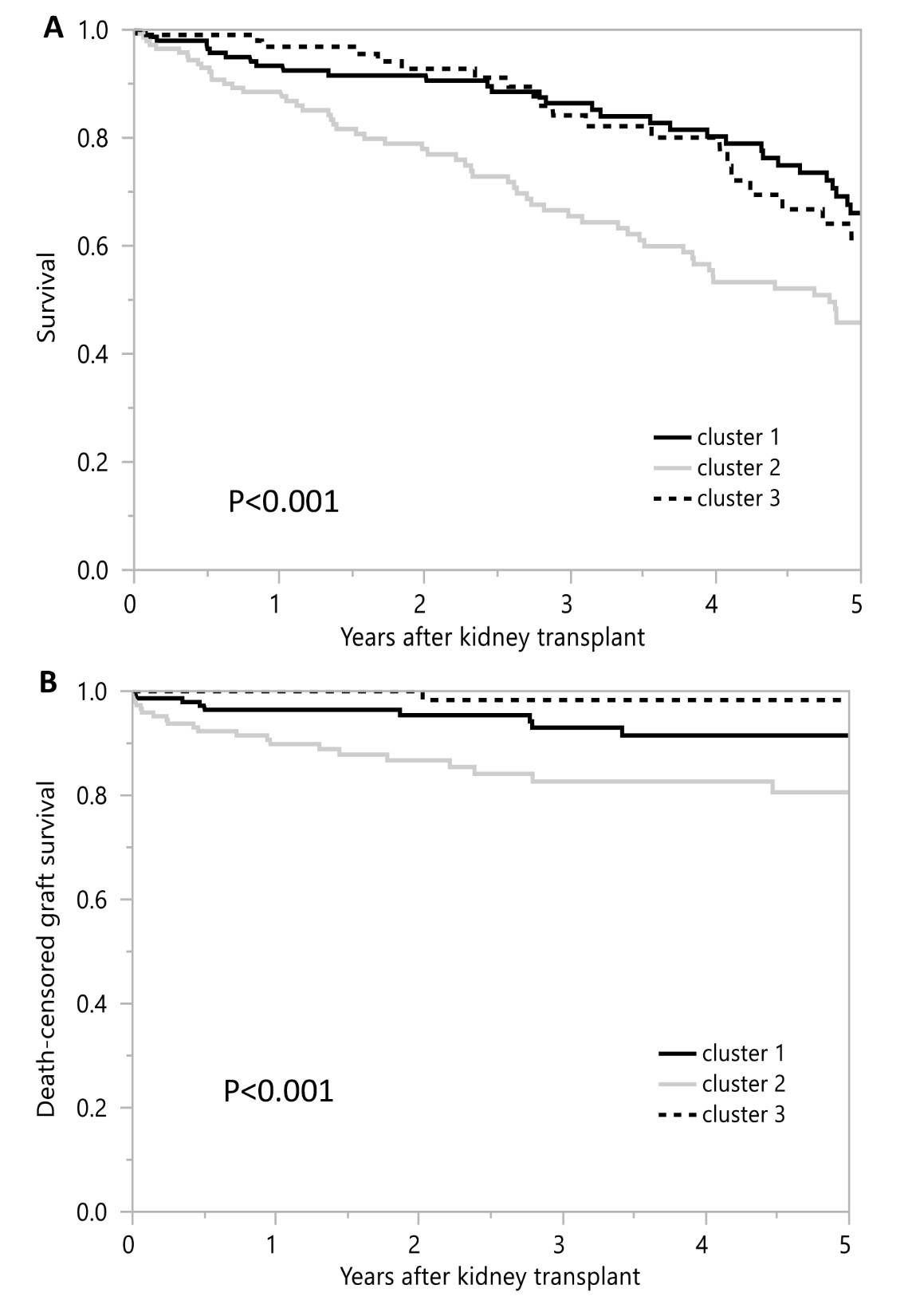Distinct Phenotypes of Kidney Transplant Recipients Aged 80 Years or Older in the United States by Machine Learning Consensus Clustering
S. A. Mao1, C. Thongprayoon2, M. A. Mao3, C. C. Jadlowiec4, N. Leeaphorn5, M. Cooper6, W. Cheungpasitporn2
1Transplant Surgery, Mayo Clinic, Jacksonville, FL, 2Nephrology and Hypertension, Mayo Clinic, Rochester, MN, 3Nephrology and Hypertension, Mayo Clinic, Jacksonville, FL, 4Transplant Surgery, Mayo Clinic, Phoenix, AZ, 5Renal Transplant Program, University of Missouri-Kansas City School of Medicine/Saint Luke's Health System, Kansas City, MO, 6MedStar Georgetown Transplant Institute, Georgetown University School of Medicine, Washington, DC
Meeting: 2022 American Transplant Congress
Abstract number: 1794
Keywords: Graft survival, Organ Selection/Allocation, Outcome, Prediction models
Topic: Clinical Science » Organ Inclusive » 72 - Machine Learning, Artificial Intelligence and Social Media in Transplantation
Session Information
Session Name: Machine Learning, Artificial Intelligence and Social Media in Transplantation
Session Type: Poster Abstract
Date: Tuesday, June 7, 2022
Session Time: 7:00pm-8:00pm
 Presentation Time: 7:00pm-8:00pm
Presentation Time: 7:00pm-8:00pm
Location: Hynes Halls C & D
*Purpose: Our study aimed to cluster very elderly kidney transplant recipients aged 80 years and above using an unsupervised machine learning approach.
*Methods: We performed consensus cluster analysis based on recipient-, donor-, and transplant-related characteristics in 419 very elderly (age ≥80 at time of transplant) kidney transplant recipients in the OPTN/UNOS database from 2010 to 2019. We identified each cluster’s key characteristics using the standardized mean difference. We compared posttransplant outcomes including death-censored graft failure, overall mortality, and acute allograft rejection among the assigned clusters.
*Results: Consensus cluster analysis identified three distinct clusters that best represented the clinical characteristics of very elderly kidney transplant recipients. Recipients in cluster 1 received standard KDPI kidneys from deceased donors. Recipients in cluster 2 received kidneys from older, hypertensive deceased donors with a KDPI score ≥85%. Kidneys for cluster 2 patients had longer cold ischemia time and the highest use of machine perfusion. Recipients in cluster 3 were preemptive or had a dialysis duration less than 1 year. These recipients received living donor kidney transplants. Cluster 3 had the most favorable posttransplant outcomes. Compared to cluster 3, cluster 1 had comparable survival but higher death-censored graft failure, while cluster 2 had lower patient survival, higher death-censored graft failure, and more acute rejection (see figure).
*Conclusions: Our study utilized an unsupervised machine learning approach to cluster very elderly kidney transplant recipients based on their clinical characteristics into three clinically unique clusters with distinct posttransplant outcomes.
To cite this abstract in AMA style:
Mao SA, Thongprayoon C, Mao MA, Jadlowiec CC, Leeaphorn N, Cooper M, Cheungpasitporn W. Distinct Phenotypes of Kidney Transplant Recipients Aged 80 Years or Older in the United States by Machine Learning Consensus Clustering [abstract]. Am J Transplant. 2022; 22 (suppl 3). https://atcmeetingabstracts.com/abstract/distinct-phenotypes-of-kidney-transplant-recipients-aged-80-years-or-older-in-the-united-states-by-machine-learning-consensus-clustering/. Accessed December 14, 2025.« Back to 2022 American Transplant Congress

